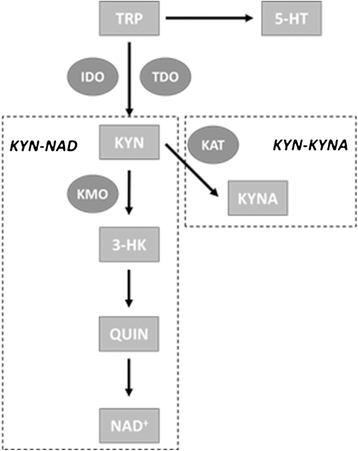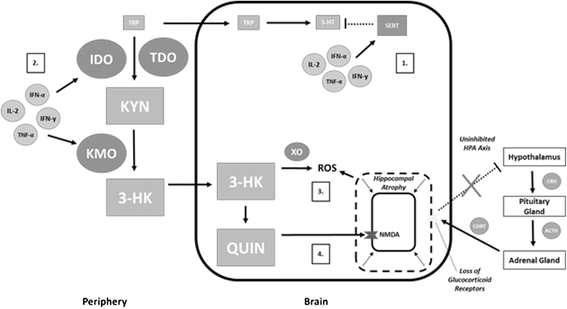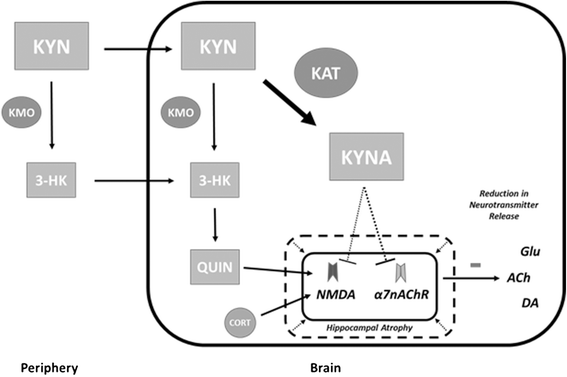The common inflammatory etiology of depression and cognitive impairment: a therapeutic target
- PMID: 25178630
- PMCID: PMC4156619
- DOI: 10.1186/s12974-014-0151-1
The common inflammatory etiology of depression and cognitive impairment: a therapeutic target
Abstract
Chronic inflammation has been shown to contribute to the development of a wide variety of disorders by means of a number of proposed mechanisms. Depression and cognitive impairment are two such disorders which may share a closely linked inflammatory etiology. The ability of inflammatory mediators to alter the activity of enzymes, from key metabolic pathways, may help explain the connection between these disorders. The chronic up-regulation of the kynurenine pathway results in an imbalance in critical neuroactive compounds involving the reduction of tryptophan and elevation of tryptophan metabolites. Such imbalances have established implications in both depression and cognitive impairment. This may implicate the immune system as a potential therapeutic target in the treatment of these disorders. The most common treatment modalities currently utilized, involve drug interventions which act on downstream targets. Such treatments help to reestablish protein balances, but fail to treat the inflammatory basis of the disorder. The use of anti-inflammatory interventions, such as regular exercise, may therefore, contribute to the effectiveness of current drug interventions in the treatment of both depression and cognitive impairment.
Figures






References
Publication types
MeSH terms
Substances
LinkOut - more resources
Full Text Sources
Other Literature Sources
Medical

